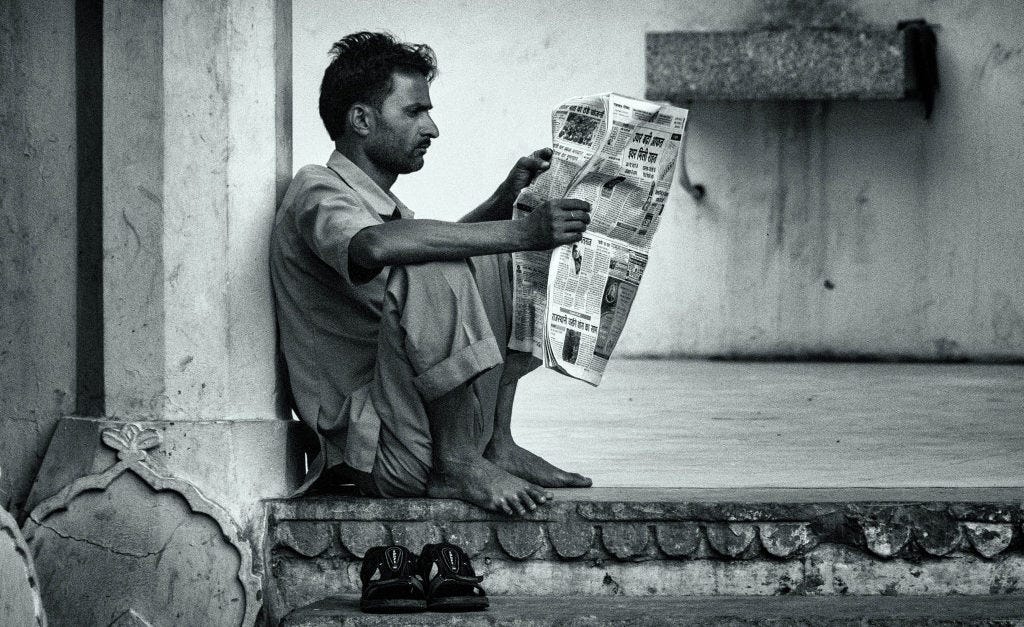Credibility Of Major Indian Media Sinks Further After Modi Loses Majority
Major media outlets in India forecast Prime Minister Modi would be re-elected with a two thirds majority
June 9, 2024
Prior to the announcement of Indian parliamentary election results on June 4, major media outlets in India – across television, cable, print and online - forecast that Prime Minister Narendra Modi would win re-election with a far larger two thirds majority. Their exit polls too forecast that Modi’s Bharatiya Janata Party (BJP) would win between 380 and 410 of the 543 seats in parliament.
For instance, in May, The Times Of India published an interview with Amit Shah, Home Minister in Modi’s cabinet. Shah stated that Modi’s alliance would win more than 400 seats. “There are no ifs and buts…Both our victory margin and seats will increase,” Shah stated.
Pro-Modi reporting by India’s major media outlets was not surprising.
“India’s media has fallen into an ‘unofficial state of emergency’ since Narendra Modi came to power in 2014 and engineered a spectacular rapprochement between his party, the BJP, and the big families dominating the media,” according to Reporters Without Borders. India ranked 159 out of 180 countries on the Paris based media watchdog’s 2024 report.
“Reliance Industries group’s magnate Mukesh Ambani, a personal friend of the prime minister (Modi), owns more than 70 media outlets that are followed by at least 800 million Indians,” the report notes. “The NDTV channel’s acquisition at the end of 2022 by Gautam Adani, a tycoon who is also close to Modi, signalled the end of pluralism in the mainstream media.”
Much of the media in the West too forecast a major win for Modi. “Modi’s BJP is set to win its third straight five-year term thanks to his potent, populist mix of economic empowerment and Hindu nationalism” and an increasingly weak opposition, CNN reported.
Modi, 73, “has fused religion with politics in a formula that has attracted wide support from the country’s majority Hindu population,” AP News reported early this month. Most exit polls project Modi to win a third term, “especially after he opened a Hindu temple in northern Ayodhya city in January, which fulfilled his party’s long-held Hindu nationalist pledge. During the polls, Modi escalated polarizing rhetoric in incendiary speeches that targeted the country’s Muslim minority.”
Also, in early June, the Voice of America, which is funded by the U.S. government, reported that exit polls projected the opposition would trail Modi’s party, winning around 150 seats, far less than a third of the total. “The opposition faces a daunting task.” The Congress Party, the leading opposition party, “has been marginalized over the last decade amid the BJP’s rise into a formidable political force under Modi…”
“Many voters experiencing economic woes nevertheless plan to stick with Modi,” the Wall Street Journal reported in April. His appeal “stems in large part from his promise to make India a stronger nation by drawing on its Hindu identity. Many Indians say they feel their country is finally being taken seriously on the world stage.”
Also in April, covering the opposition alliance led by the Congress Party, TIME noted, “More than two dozen opposition parties in India have banded together—but the fractured alliance can't seem to pose a real challenge.”
India’s 2024 parliamentary election “results have shocked most pollsters and Modi supporters—and indeed, the country,” TIME reported after the results.
Contrary to forecasts by TIME and other media, the opposition alliance, led by the Congress Party, won 232 parliamentary seats this year, up from 65 in the 2019 elections. The BJP lost its majority, securing 240 of the 543 parliamentary seats. Modi was re-elected Prime Minister only because allied regional parties won an additional 52 seats, giving the BJP-led coalition a total of 292 seats.
An editorial in the Times of India stated after the election results, “Indian voters can’t be taken for granted.”
What about unbiased coverage by India’s major media outlets?


